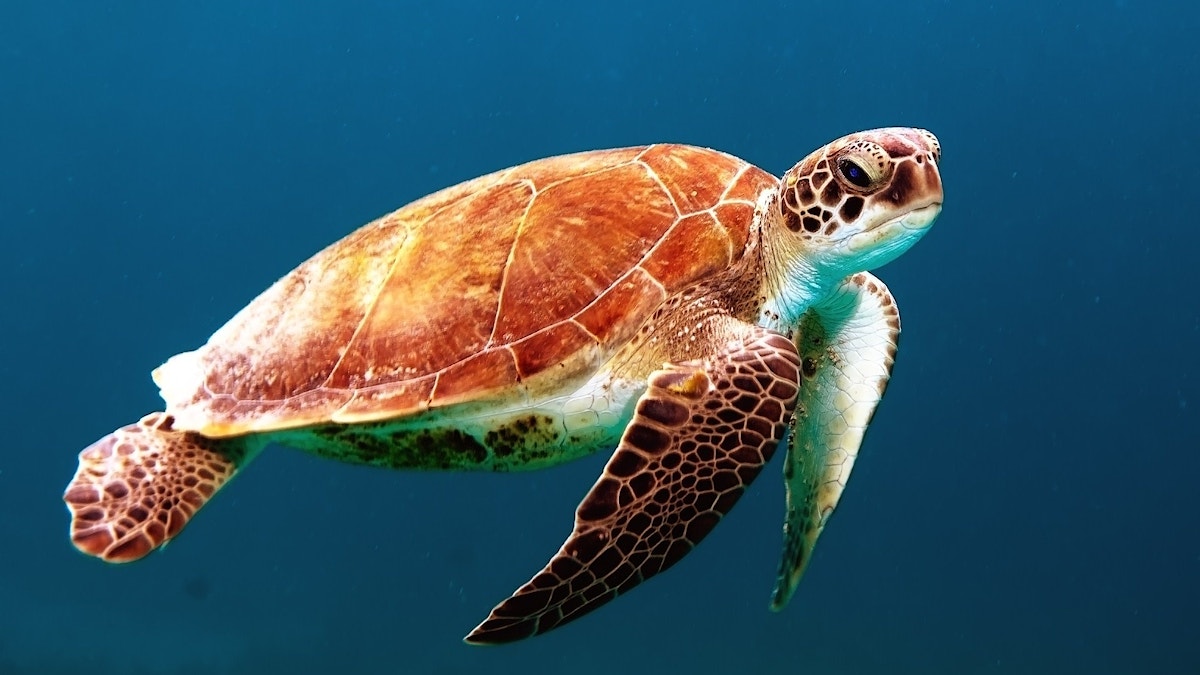

THERE are seven species of marine turtles in the world and six are known from Australian waters.
Moreton Bay is a marine turtle hotspot with three species commonly using the Moreton Bay Region – the loggerhead turtle (Caretta caretta), the green turtle (Chelonia mydas) and the hawksbill turtle (Eretmochelys imbricata). Moreton Bay has a resident population of green and loggerhead turtles of all sizes, from small immatures to adults of both sexes. Both species are widely distributed throughout Moreton Bay, but the Moreton and Amity Banks has the highest concentration of them. Hawksbill turtles are generally associated with reef habitats at such areas as Flinders Reef, the rocky reefs offshore of North Stradbroke Island and Peel Island.
The Moreton Bay Region is not an important nesting location for marine turtle species, but some nesting does occur. Loggerhead turtles do nest sporadically on Moreton, North Stradbroke and South Stradbroke Islands; and also, very occasionally on beaches on the western shoreline (e.g. Scarborough). This summer, a green turtle has been repeatedly nesting on North Stradbroke Island. Successful nesting of marine turtles and survival of hatchlings can be negatively impacted by artificial lights as it can disorientate turtles (hatchlings in particular) as under natural conditions they use subtle lighting cues for navigation. Lights at or adjacent to a nesting beach can result in turtle hatchlings not being able to find their way back to the ocean after hatching.
While not important for nesting, Moreton Bay is a very important feeding area for marine turtles. Large immature and adult-sized loggerhead turtles feed in a wide range of tidal and subtidal habitats including coral and rocky reefs, seagrass beds, and unvegetated sand and mud habitats. The prey of loggerhead turtles is extremely diverse and includes marine snails and bivalve molluscs, crabs like blue swimmer crabs and hermit crabs, jellyfish, sea anemones, sea urchins and sea cucumbers. Green turtles are generally totally herbivorous and feed principally on sea grass, algae and mangrove fruit, but may also feed on large plankton such as the blue jellyfish.
Historically, marine turtles in Moreton Bay were subject to mortality as a result of commercial prawn trawling, but the introduction in the late 1990s of turtle excluder devices, which are highly effective at excluding marine turtles and other large animals, almost totally removed this source of mortality. Green and hawksbill turtles in Moreton Bay die due to the consumption of plastic bags and other pieces of plastic litter which they most likely mistake for jellyfish. Marine turtle mortality in Moreton Bay can also be related to various disease issues, some of which are linked to poor water quality.
When you are out and about on the water in Moreton Bay, keep an eye out for our turtle friends!
Related Stories
Top Stories

Seven charged in Operation Lasso
Police have arrested seven people, including some from North Lakes and Mango Hill, on 20 charges, after a road safety operation last night.


Popular Stories

Beach-front tree deliberately poisoned
A huge Norfolk Pine tree on Redcliffe’s foreshore has been deliberately poisoned and is in danger of being cut down.

Polar Plunge for Special Olympics
A Morton Bay mum will plunge into icy water next month to raise money for Special Olympics – and she wants others to join her. Here's how to get involved...

Photo gallery: 2024 Jetty 2 Jetty
More than 5000 people took part in the Jetty 2 Jetty Half Marathon and Fun Run on Sunday, July 21 – running, walking or rolling in one of five categories. Check out the photo gallery













